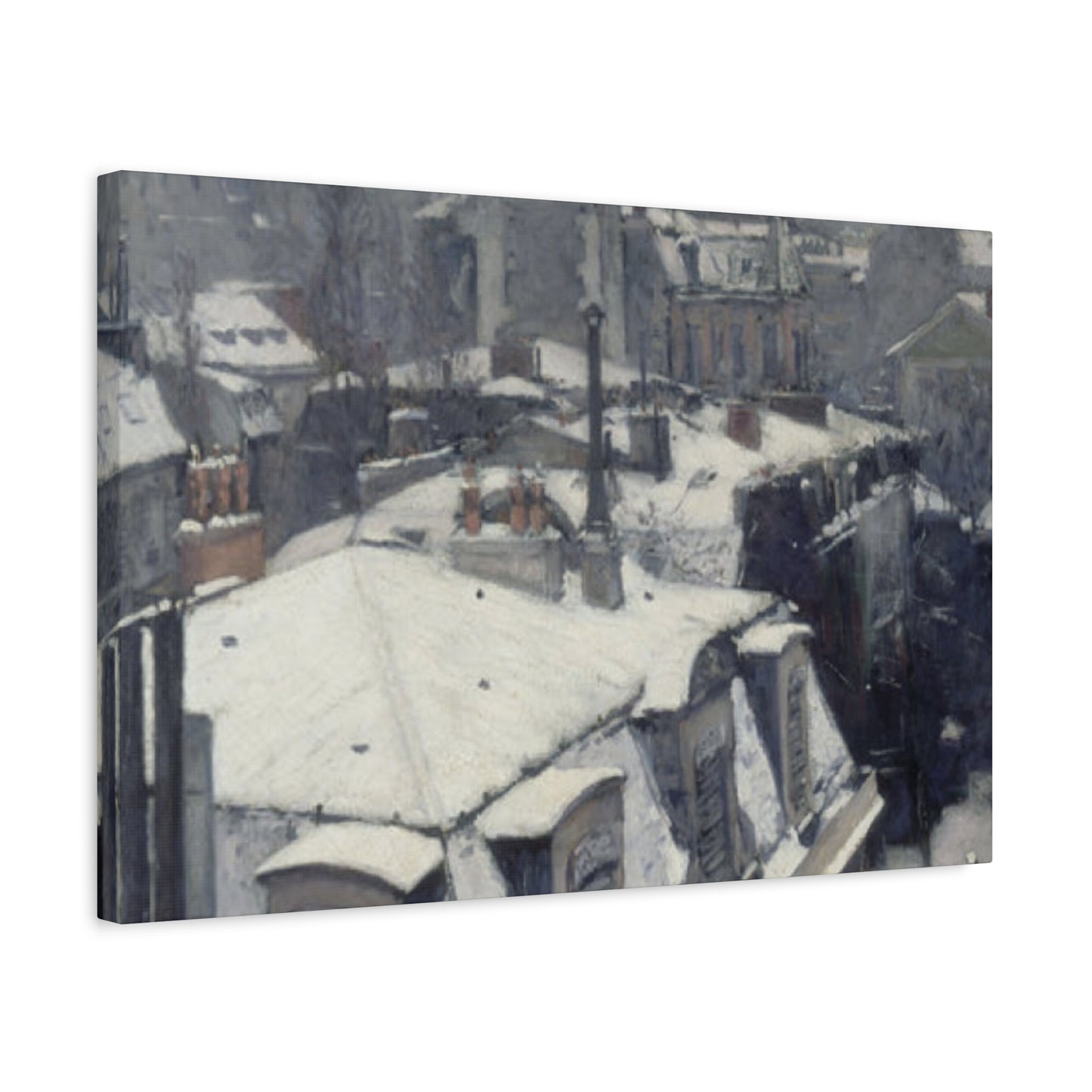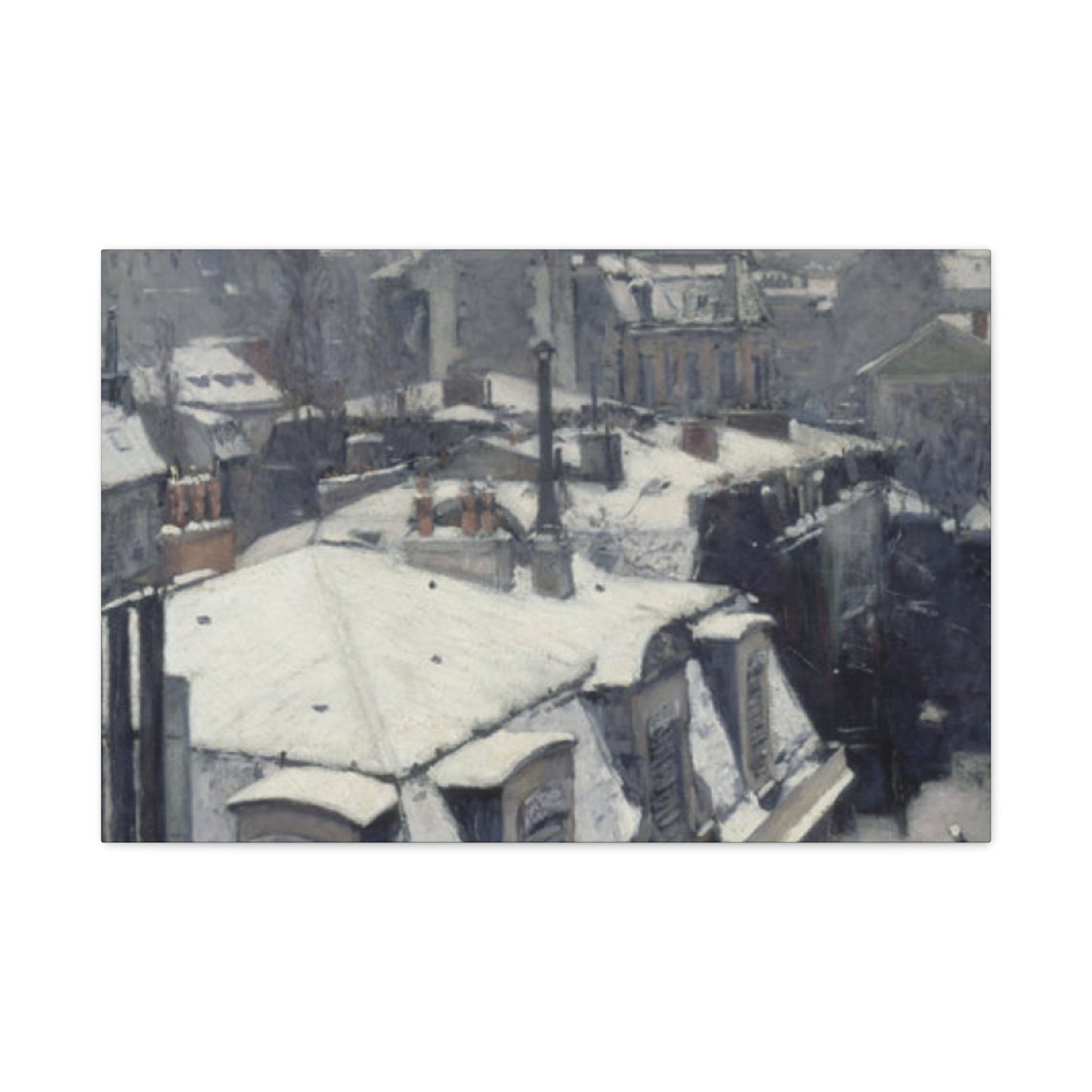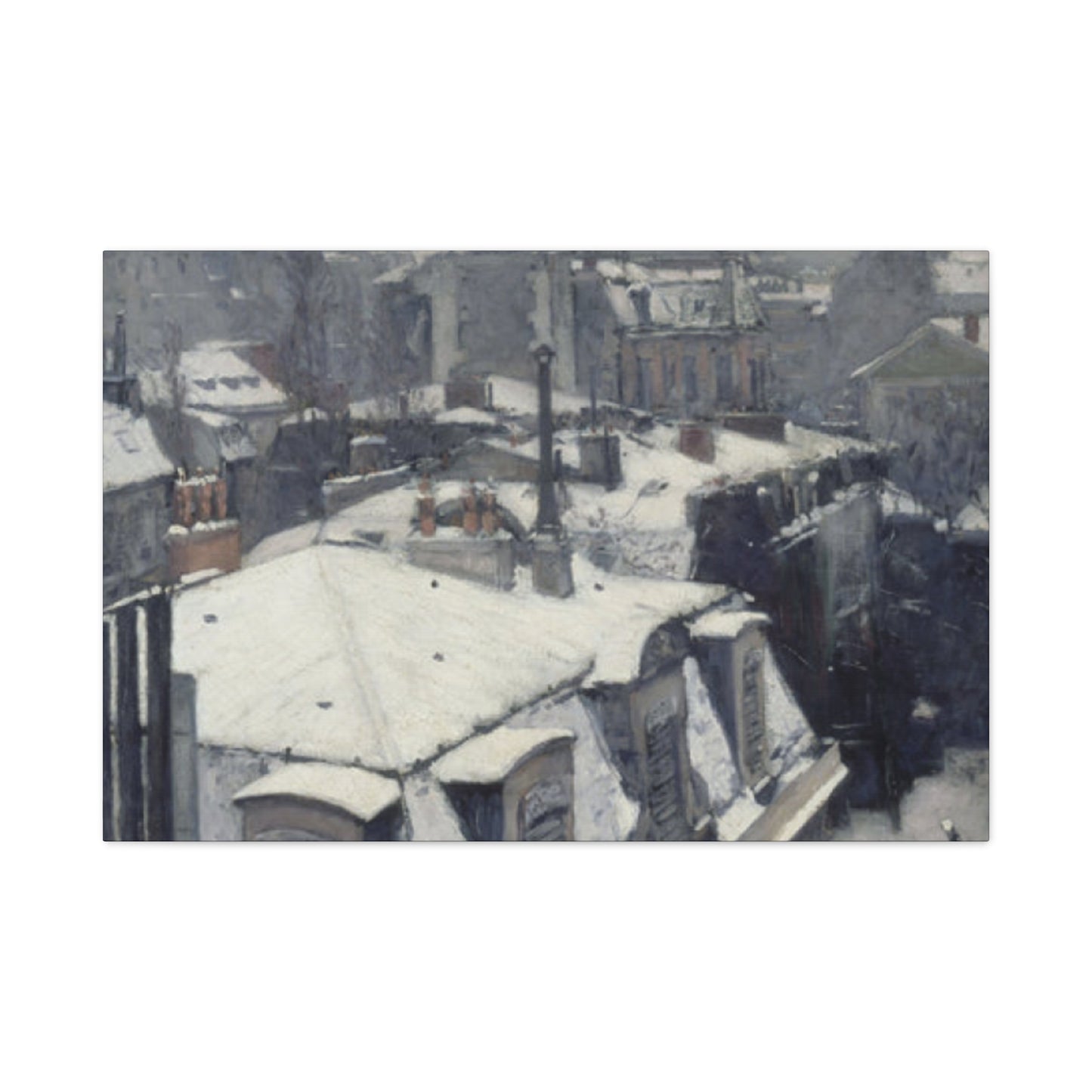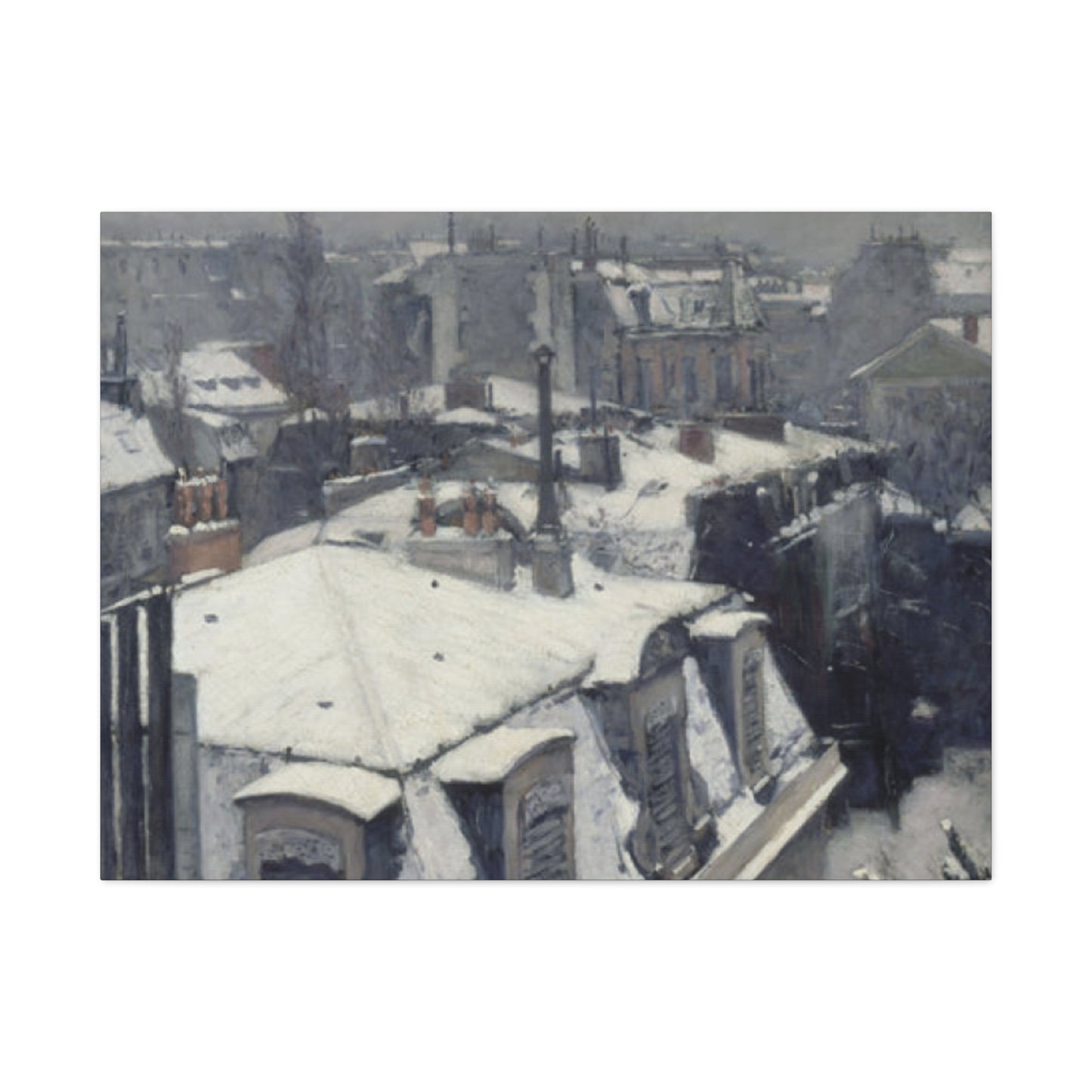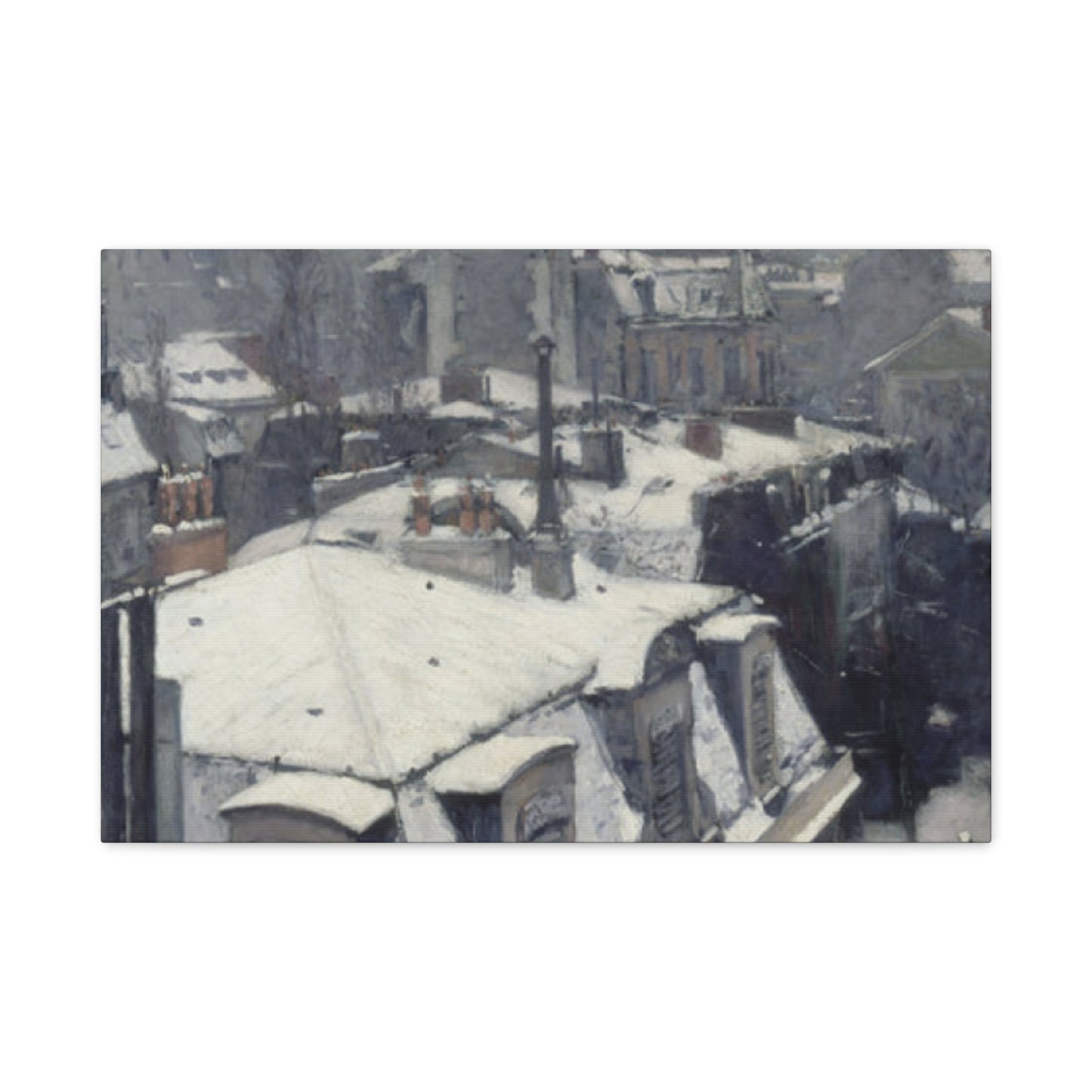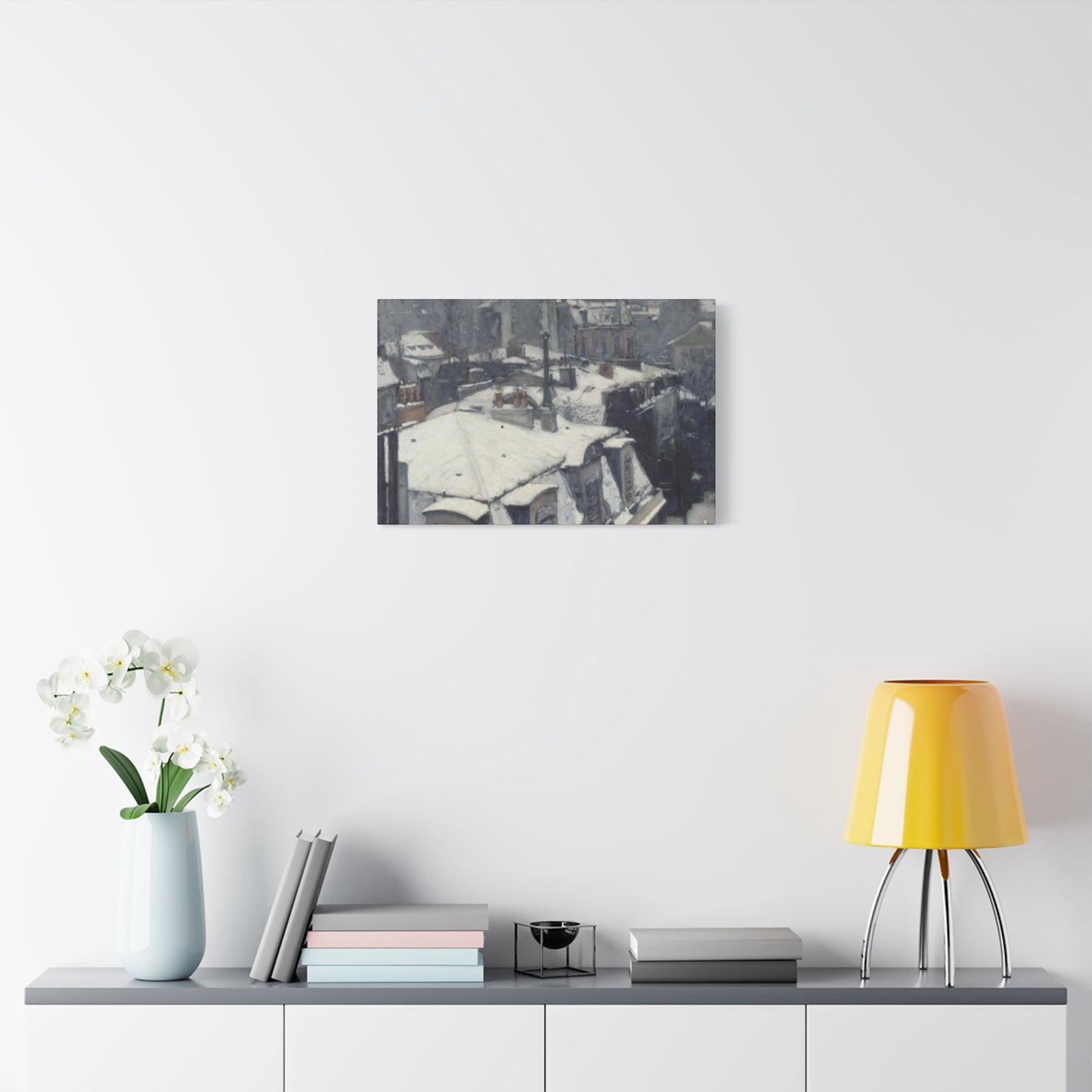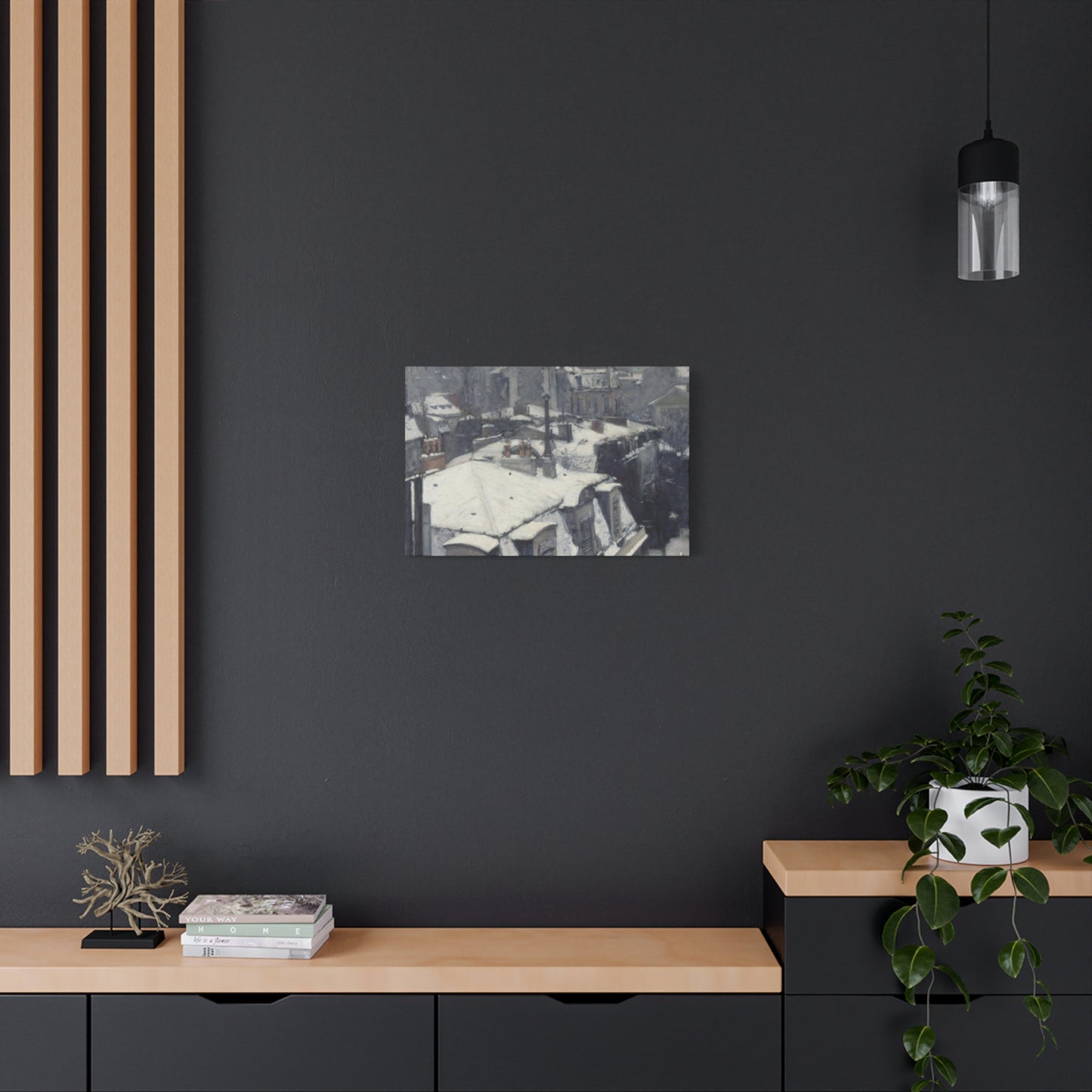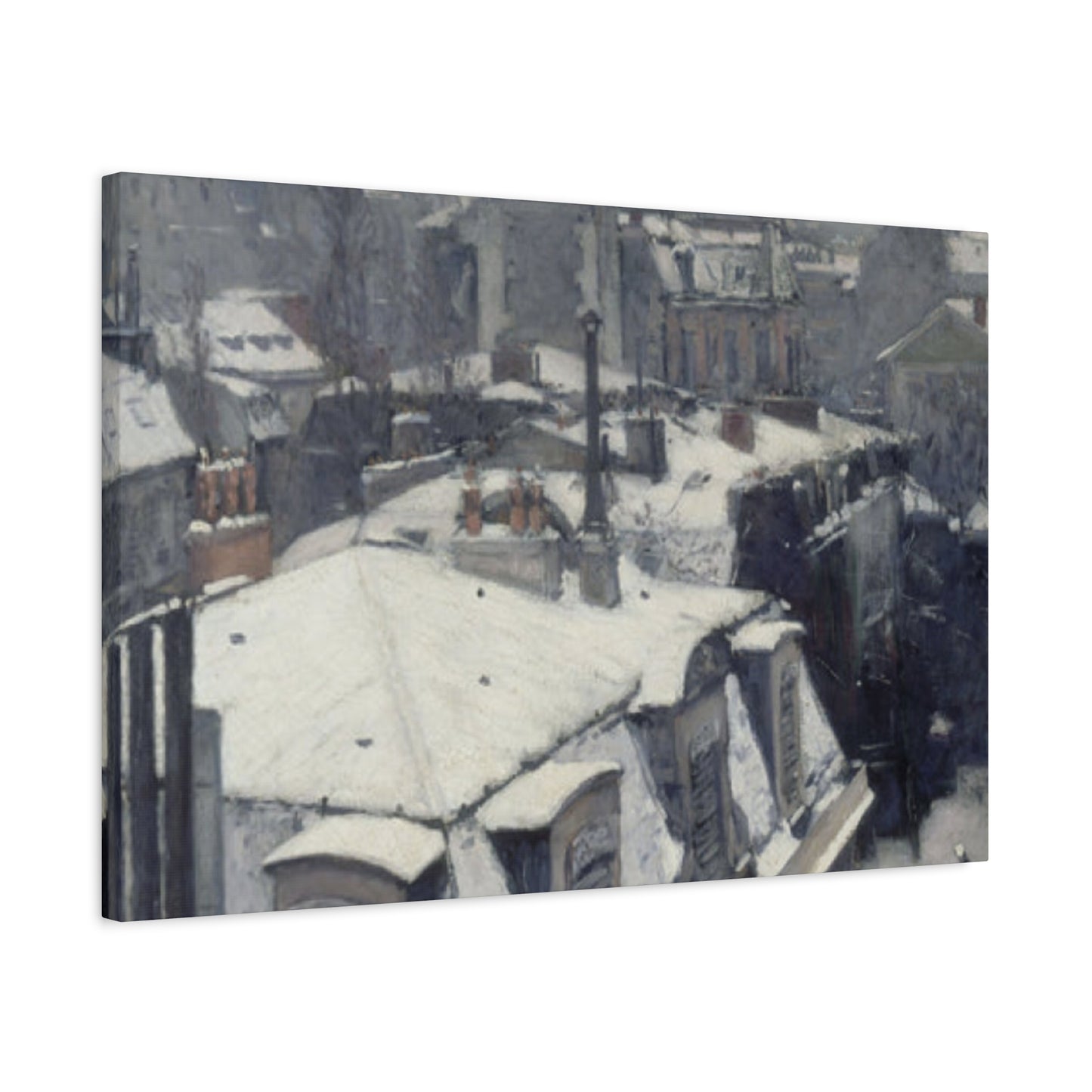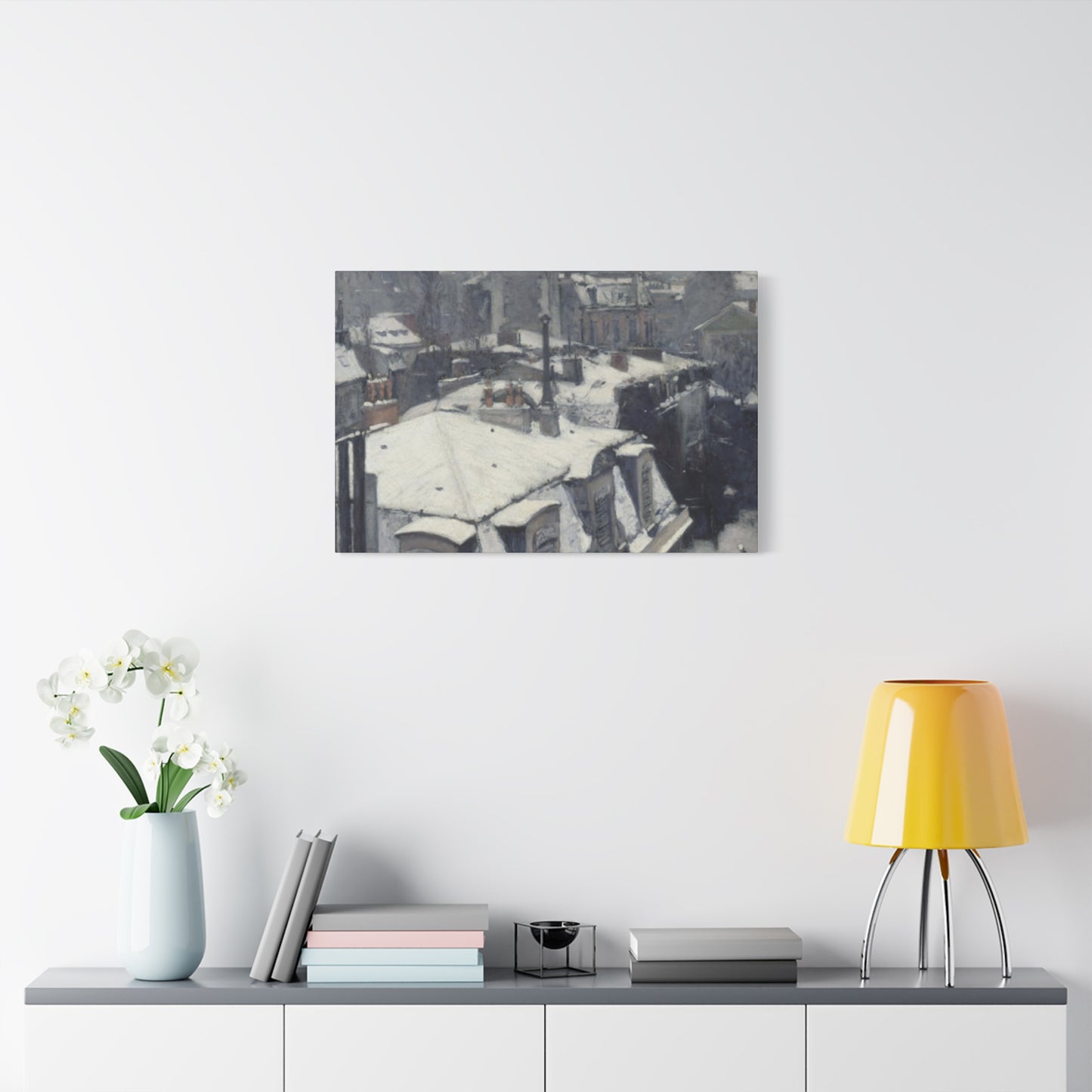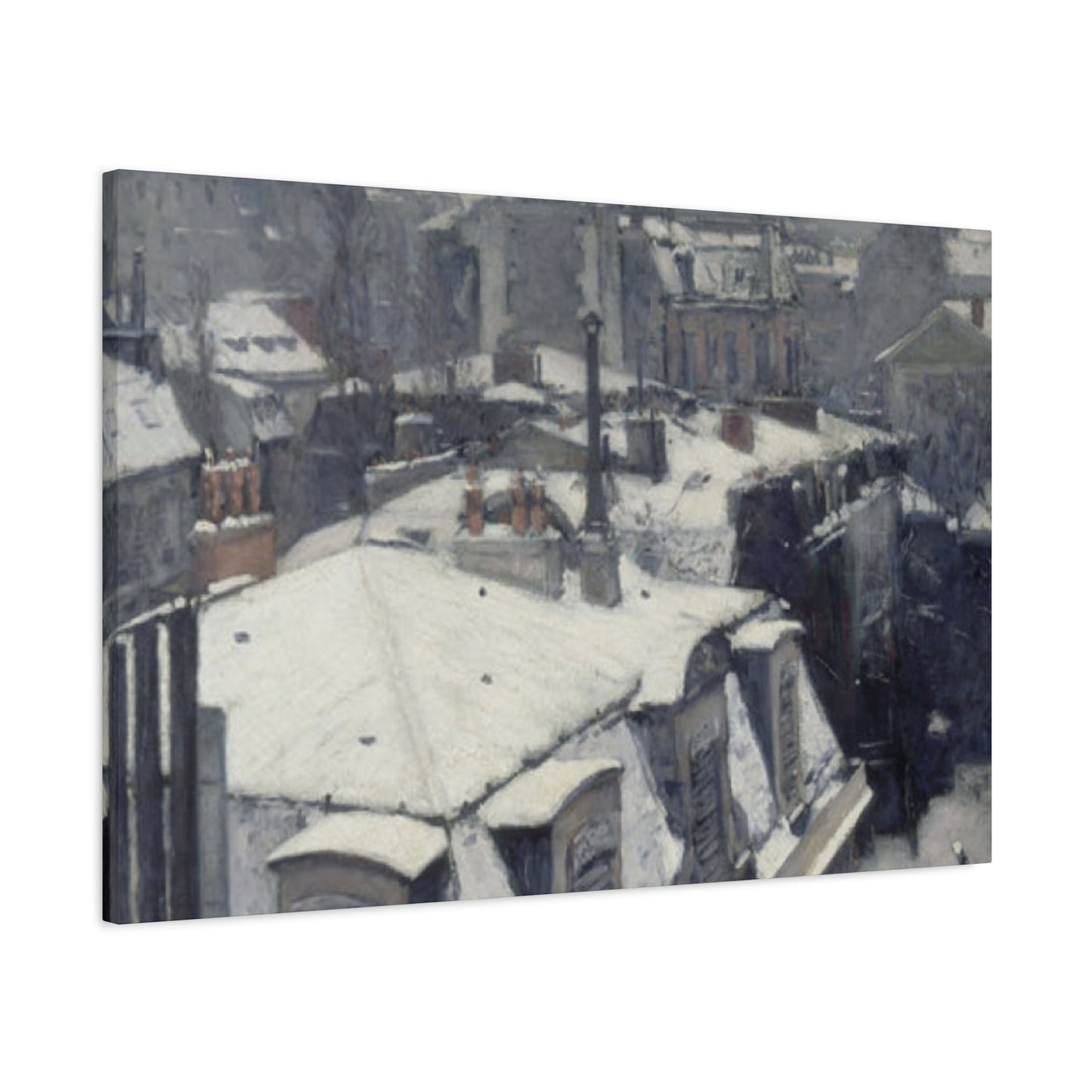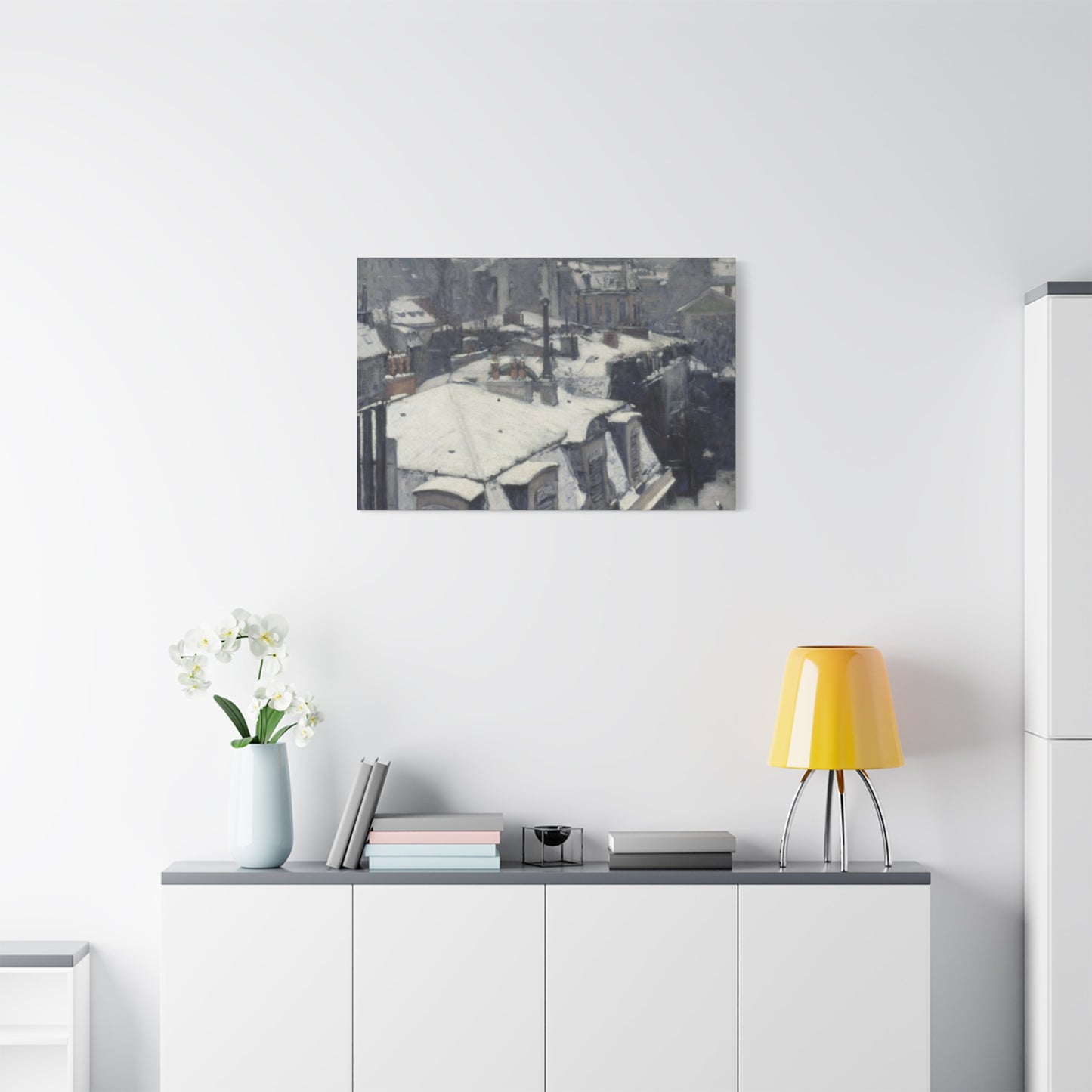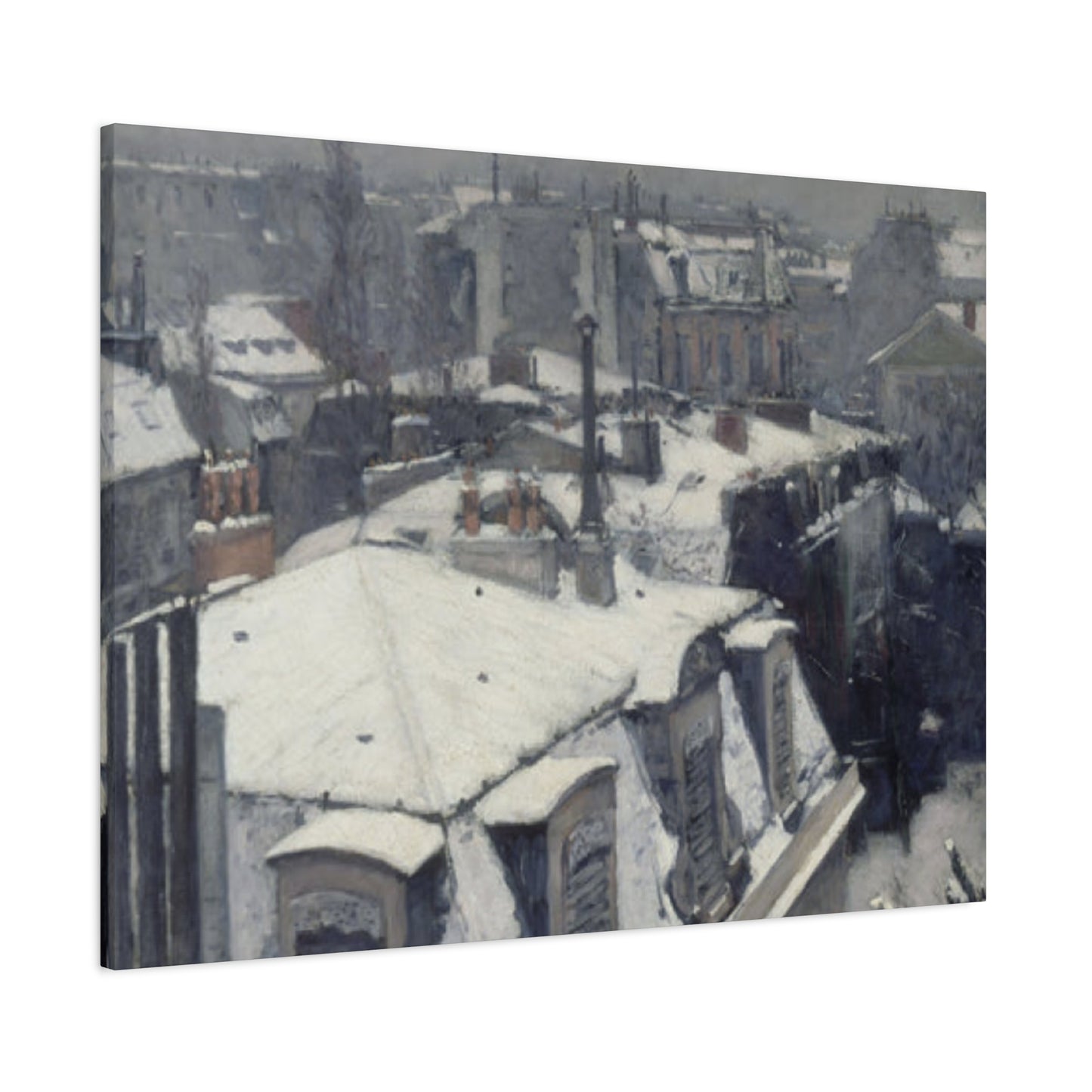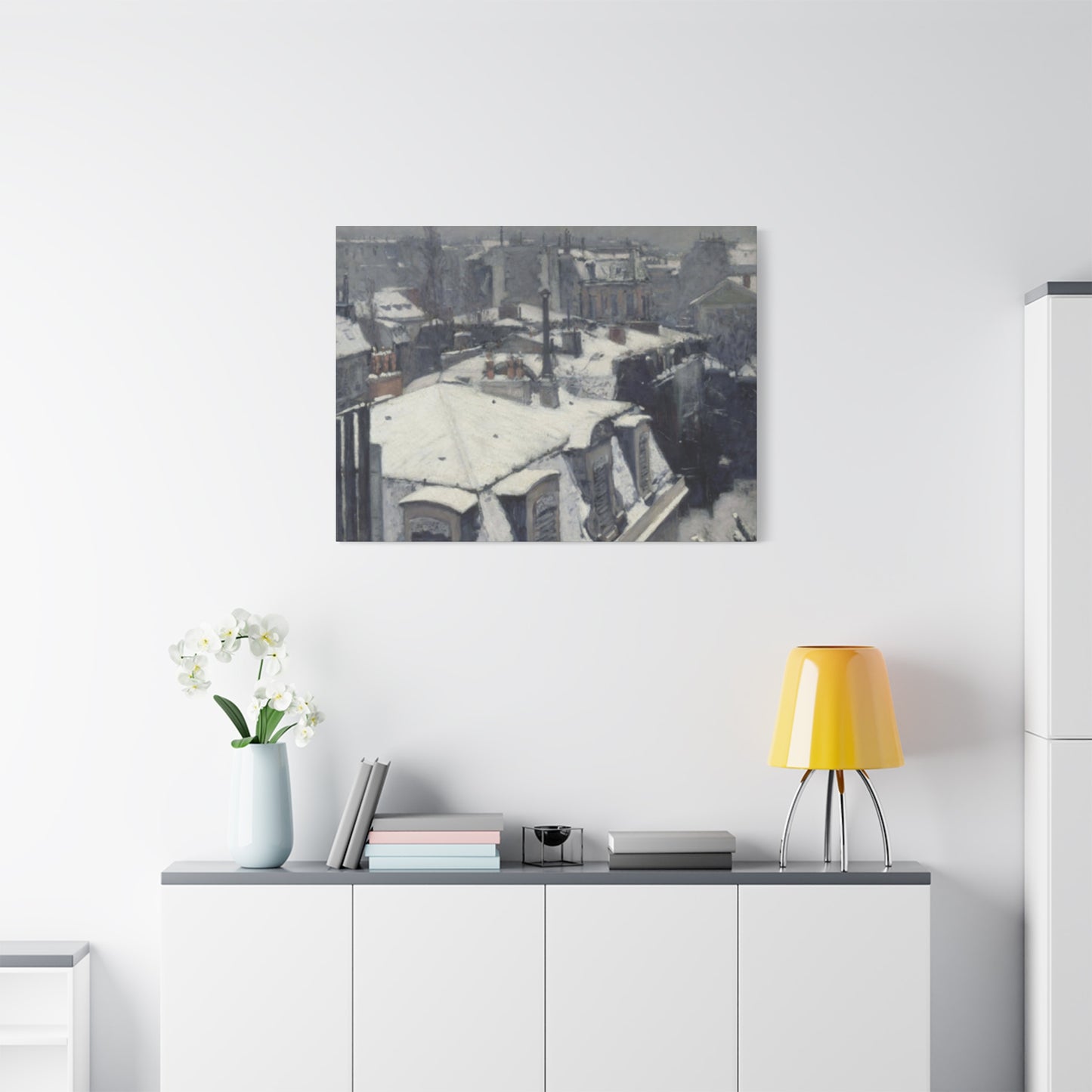Snowfall Painting Wall Art: Gustav's Masterful Winter Canvas Collection
Winter's ethereal beauty has long captivated artists and art enthusiasts alike, with its pristine landscapes and serene atmospheres offering endless inspiration for creative expression. Among the most compelling forms of seasonal artwork, snowfall wall art stands as a testament to nature's quiet magnificence, bringing the tranquil essence of winter into our living environments. Gustav's exceptional collection of winter canvases represents a pinnacle of artistic achievement, masterfully capturing the delicate dance of falling snow and the peaceful silence that accompanies winter's embrace.
The allure of snowfall wall art extends far beyond mere aesthetic appeal. These carefully crafted pieces serve as windows into winter's soul, offering viewers a moment of respite from the bustling demands of daily life. Gustav's approach to winter painting demonstrates an intimate understanding of the season's emotional resonance, transforming simple meteorological phenomena into profound artistic statements that speak to our deepest connections with the natural world.
Contemporary homes increasingly seek artwork that not only decorates but also creates atmosphere and emotional connection. Snowfall wall art fulfills this desire perfectly, offering both visual interest and psychological comfort. The gentle movement suggested in painted snowflakes, the muted palette of winter skies, and the peaceful silence captured in frozen landscapes all contribute to creating living environments that promote relaxation and contemplation.
Gustav's winter collection stands apart in its ability to translate the ephemeral nature of snowfall into permanent artistic expression. Each brushstroke carefully considers the way light interacts with falling snow, the subtle variations in temperature that affect snowflake formation, and the emotional impact of winter's quiet beauty. This attention to detail results in artwork that doesn't merely depict winter scenes but actually evokes the sensory experience of being immersed in a snowfall.
The psychological benefits of incorporating snowfall wall art into home environments cannot be overstated. Research in environmental psychology suggests that exposure to winter imagery can promote feelings of calm and introspection, qualities that are increasingly valued in our fast-paced modern world. Gustav's paintings harness these psychological benefits, creating artwork that serves as both decoration and emotional sanctuary.
Modern art collectors and homeowners alike are discovering the versatility of snowfall wall art in contemporary design schemes. Unlike seasonal decorations that must be stored and rotated, quality winter paintings like Gustav's work transcend seasonal boundaries, offering year-round beauty that adapts to changing design trends and personal preferences. The timeless appeal of winter imagery ensures that these investments in art remain relevant and cherished for generations.
The technical mastery required to successfully capture snowfall in paint demands exceptional skill and artistic vision. Gustav's work demonstrates this mastery through innovative techniques that bring snowflakes to life on canvas, creating depth and movement that transforms static paintings into dynamic visual experiences. The interplay between brushwork and color selection in these pieces reveals an artist who understands both the technical aspects of painting and the emotional impact of winter imagery.
Cultural significance also plays a role in the enduring appeal of snowfall wall art. Throughout history, winter has been associated with reflection, renewal, and the quiet wisdom that comes from nature's dormant periods. Gustav's paintings tap into these cultural associations, creating artwork that resonates with viewers on multiple levels and across diverse cultural backgrounds.
The growing popularity of biophilic design principles in contemporary architecture and interior decoration has further elevated the status of nature-inspired artwork like Gustav's snowfall paintings. These design philosophies recognize the human need for connection with natural environments, even within urban and suburban living situations. Snowfall wall art provides this connection, bringing the beauty and tranquility of winter landscapes into homes and offices where direct contact with nature may be limited.
Calm Winter Scenes by Gustav
Gustav's mastery in creating calm winter scenes represents decades of artistic development and deep observation of nature's quiet moments. His approach to winter painting goes beyond simple landscape recreation, instead focusing on capturing the emotional essence of winter's peaceful embrace. Each canvas in his collection tells a story of stillness, where time seems suspended in the gentle descent of snowflakes and the hushed silence of snow-covered terrain.
The artist's technique for achieving this sense of calm involves careful consideration of composition, color temperature, and brushwork rhythm. Gustav understands that true tranquility in art comes not from the absence of movement, but from the suggestion of gentle, purposeful motion. His snowfall scenes demonstrate this principle through subtle variations in snowflake size and direction, creating visual flow that guides the viewer's eye in a meditative pattern across the canvas.
Color selection plays a crucial role in Gustav's calm winter scenes. Rather than relying on stark whites and harsh contrasts, he employs a sophisticated palette of warm grays, soft blues, and muted purples that suggest the complex interplay of light and atmosphere during snowfall. These color choices create an enveloping sense of warmth despite the cold subject matter, making viewers feel invited into the scene rather than excluded by winter's harsh reputation.
The psychological impact of Gustav's calm winter scenes extends beyond immediate visual pleasure. Studies in art therapy have shown that exposure to peaceful landscape imagery can reduce stress levels and promote mental clarity. Gustav's paintings harness these therapeutic qualities, creating artwork that functions as a form of visual meditation. The repetitive patterns of falling snow and the gentle rhythms of his brushwork combine to produce a hypnotic effect that encourages contemplation and relaxation.
Compositional balance in Gustav's winter scenes reflects his understanding of how visual weight affects emotional response. He carefully distributes elements within each painting to create a sense of equilibrium that mirrors the natural balance found in winter landscapes. Heavy snow-laden branches are balanced by areas of open sky, while the vertical lines of tree trunks provide structural stability against the organic curves of drifting snow.
The atmospheric perspective employed in Gustav's calm winter scenes demonstrates advanced technical skill in creating depth and dimension. Distant elements fade into soft, misty backgrounds while foreground details remain sharp and defined. This technique not only creates realistic spatial relationships but also enhances the sense of quiet isolation that characterizes his winter imagery. Viewers feel as though they are standing within the painting, surrounded by the peaceful silence of falling snow.
Gustav's attention to the subtle variations in snow texture sets his work apart from more generic winter imagery. He recognizes that snow is not a uniform white substance but rather a complex material that reflects light differently depending on its age, density, and environmental conditions. Fresh powder snow appears different from wind-packed drifts, and Gustav captures these distinctions through varied brushwork and color application.
The temporal quality of Gustav's calm winter scenes suggests specific moments within the winter experience. Some paintings capture the early stages of snowfall, when individual flakes are still visible against darker backgrounds. Others depict the aftermath of heavy snow, when the landscape has been transformed into soft, sculptural forms. This range of temporal perspectives allows viewers to connect with different aspects of their own winter memories and experiences.
Lighting effects in Gustav's winter scenes demonstrate his deep understanding of how natural illumination changes during different weather conditions. The soft, diffused light of an overcast sky during snowfall creates different shadows and highlights than the sharp contrasts of sun on snow. Gustav masterfully captures these variations, creating paintings that feel authentic to specific weather conditions and times of day.
The emotional resonance of Gustav's calm winter scenes stems from their ability to evoke personal memories and associations. Many viewers report feeling transported to childhood memories of snow days or peaceful winter walks when viewing his work. This emotional connection transforms the paintings from mere decorative objects into meaningful art that enriches daily life through its capacity to evoke positive emotional states.
Snowfall Textures in Painting
The technical challenge of capturing snowfall textures in paint requires exceptional skill and innovative approaches to traditional painting techniques. Gustav's mastery of these textures represents years of experimentation and observation, resulting in methods that bring unprecedented realism and emotional impact to winter scenes. His approach to snowfall textures goes beyond simple white dots or streaks, instead creating complex layered effects that suggest the multifaceted nature of falling snow.
Understanding the physics of snowfall is essential to creating convincing painted textures. Gustav studies how snowflakes form, fall, and interact with air currents to inform his artistic technique. Different atmospheric conditions produce different snowfall patterns, from gentle vertical descent during calm weather to diagonal streaks during windy conditions. This scientific understanding translates into more authentic artistic representation.
Brushwork techniques for snowfall textures require careful consideration of tool selection and paint application methods. Gustav employs various brush sizes and shapes to create different snowfall effects, from fine detail brushes for individual flakes to broader tools for suggesting snow masses. The direction and pressure of brushstrokes directly affect the perceived movement and density of snowfall, requiring precise control to achieve desired effects.
Layering techniques play a crucial role in creating realistic snowfall textures. Gustav builds up his snowfall effects through multiple transparent layers, each contributing to the overall depth and complexity of the final image. Base layers establish the general movement and density patterns, while subsequent layers add detail and variation. This approach creates snowfall that appears to exist at different depths within the painting, enhancing three-dimensional realism.
Color theory application in snowfall textures challenges common assumptions about snow being purely white. Gustav demonstrates that effective snowfall painting requires understanding how snow reflects and absorbs surrounding colors. Snowflakes in shadow may appear blue or purple, while those catching direct light might show warm yellow or pink tones. This sophisticated color approach creates snowfall that integrates naturally with the overall painting composition.
Paint consistency and medium selection significantly impact snowfall texture effectiveness. Gustav experiments with various paint viscosities and medium additives to achieve different textural qualities. Thicker paint applications can suggest heavy, wet snowflakes, while thin glazes might represent light powder snow. The choice of painting medium affects paint flow and drying characteristics, influencing the final texture appearance.
Negative painting techniques, where surrounding areas are painted to define snowfall shapes, offer alternative approaches to traditional additive methods. Gustav often employs this technique to create snowfall that appears naturally integrated with background elements rather than superficially applied. This approach requires careful planning and execution but results in more convincing overall compositions.
The optical effects of snowfall, including how individual flakes blur and merge at different distances, inform Gustav's textural approaches. Close snowflakes appear as distinct individual forms, while distant ones merge into atmospheric effects. Successfully capturing these optical phenomena requires varying painting techniques within single compositions, demonstrating advanced technical versatility.
Atmospheric perspective affects snowfall texture representation at different distances within paintings. Foreground snowfall requires detailed individual flake rendering, while background snow might be suggested through softer, more generalized treatments. Gustav's skill in varying his textural approaches creates convincing spatial depth that enhances overall composition effectiveness.
Edge treatment in snowfall textures determines how naturally the snow integrates with surrounding elements. Hard edges might suggest sharp, crystalline snow conditions, while soft edges could indicate gentle, moisture-laden flakes. Gustav's selective use of edge variety creates textural interest while maintaining overall compositional harmony.
The directional quality of snowfall textures contributes significantly to painting mood and energy. Vertical snowfall suggests calm, peaceful conditions, while diagonal patterns indicate wind and movement. Gustav uses these directional cues to reinforce the emotional content of his paintings, ensuring that technical elements support overall artistic intent.
Highlight and shadow patterns within snowfall textures require careful consideration of light source direction and intensity. Individual snowflakes cast tiny shadows while simultaneously catching and reflecting light. Gustav's attention to these subtle light interactions creates snowfall that appears genuinely three-dimensional rather than flat and decorative.
Soft Light in Snowfall Art
The portrayal of soft light in snowfall art represents one of the most challenging and rewarding aspects of winter painting. Gustav's expertise in capturing these delicate lighting effects transforms his canvases into luminous experiences that seem to glow with inner warmth despite their winter subjects. His understanding of how light behaves during snowfall conditions allows him to create paintings that authentically reproduce the unique atmospheric quality of these weather events.
Atmospheric scattering during snowfall creates distinctive lighting conditions that differ significantly from clear weather illumination. Snow particles in the air act as tiny mirrors and diffusers, scattering light in multiple directions and creating the soft, even illumination characteristic of snowfall. Gustav captures this phenomenon through careful color mixing and application techniques that reproduce the gentle luminosity of snow-filtered light.
The color temperature of light during snowfall tends toward cooler tones, yet Gustav's skill lies in finding warm undertones within these cool palettes. His paintings demonstrate that effective snowfall lighting isn't simply a matter of using cool colors, but rather understanding how warm and cool tones interact to create the complex atmospheric effects observed during actual snowfall. This sophisticated color understanding results in paintings that feel both true to life and emotionally appealing.
Contrast relationships in soft snowfall light differ dramatically from harsh sunlight conditions. Gustav recognizes that successful snowfall paintings require subtle contrast management, avoiding the stark value differences that might work in bright weather scenes. His approach to soft light emphasizes gentle transitions between light and dark areas, creating overall tonal harmony that supports the peaceful mood of winter scenes.
Shadow quality in snowfall conditions becomes diffused and subtle, requiring different painting approaches than sharp sunlight shadows. Gustav's technique for rendering these soft shadows involves careful color mixing and gradual value transitions that suggest form without harsh definition. This approach maintains three-dimensional modeling while preserving the overall soft quality of snowfall illumination.
Reflected light plays an important role in snowfall scenes, as snow-covered surfaces bounce light upward, illuminating shadowed areas that might be completely dark in other conditions. Gustav incorporates these reflected light effects into his paintings, creating shadow areas that maintain detail and color rather than falling into flat darkness. This attention to reflected light contributes significantly to the overall luminosity of his winter scenes.
The directional quality of soft snowfall light often appears to come from all directions simultaneously, creating even illumination without strong directional cues. Gustav reproduces this effect through painting techniques that avoid obvious light source indicators, instead creating overall luminosity that seems to emanate from within the painting itself. This approach enhances the mysterious, ethereal quality of his snowfall scenes.
Color mixing for soft snowfall light requires understanding how atmospheric conditions affect color perception. Distant colors become muted and shift toward blue-gray tones, while nearby colors maintain more saturation and warmth. Gustav's skill in gradually shifting color characteristics throughout his paintings creates convincing atmospheric depth that enhances the soft light quality.
The psychological impact of soft light in Gustav's snowfall art contributes significantly to viewer emotional response. Soft lighting conditions are psychologically associated with comfort, safety, and tranquility. His paintings harness these associations, creating artwork that promotes feelings of calm and well-being through their lighting characteristics alone.
Paint application techniques for achieving soft light effects require careful brushwork and color blending. Gustav employs various blending methods to create the gradual transitions characteristic of soft illumination, avoiding harsh brushstrokes that might disrupt the gentle quality of snowfall light. His technical skill in managing paint edges and transitions supports the overall soft light aesthetic.
Glazing techniques allow Gustav to build up complex soft light effects through multiple transparent layers. Each glaze contributes to the overall luminosity while maintaining the transparency and depth characteristic of atmospheric lighting. This layered approach creates richness and complexity that cannot be achieved through single-layer painting methods.
The temporal aspects of soft snowfall light change throughout the day, and Gustav's paintings often capture specific lighting moments within the snowfall experience. Early morning snowfall might feature cooler, more mysterious lighting, while afternoon scenes could show warmer, more welcoming illumination. This attention to temporal lighting qualities adds authenticity and emotional specificity to his winter scenes.
Minimalist Snowfall Canvas Ideas
Minimalism in snowfall art represents a sophisticated approach to winter painting that emphasizes essential elements while eliminating unnecessary details. Gustav's minimalist snowfall canvases demonstrate how reducing compositional complexity can actually intensify emotional impact and visual power. His approach to minimalist winter art focuses on distilling snowfall scenes to their most essential visual and emotional components.
The philosophy behind minimalist snowfall art centers on the principle that less can indeed be more when artistic choices are carefully considered. Gustav's minimalist works prove that effective winter painting doesn't require complex compositions or detailed rendering to communicate the essence of snowfall experience. Instead, these paintings rely on subtle color relationships, simplified forms, and carefully considered negative areas to create powerful visual statements.
Color palette reduction in Gustav's minimalist snowfall pieces often involves limiting the range to just a few carefully selected hues. These restricted palettes force viewers to appreciate subtle color variations and relationships that might be overlooked in more complex compositions. The resulting paintings possess a refined elegance that speaks to sophisticated artistic sensibilities while remaining accessible to diverse audiences.
Compositional simplification in minimalist snowfall art requires identifying the most essential elements that define the snowfall experience. Gustav's minimalist works might feature just a few key elements: falling snow, a horizon line, and perhaps a single focal point such as a lone tree or building. This reduction forces each remaining element to carry greater visual and emotional weight within the overall composition.
Negative area management becomes crucial in minimalist snowfall compositions, as empty areas must work as actively as painted elements to create visual balance and interest. Gustav's skill in utilizing negative areas transforms seemingly empty canvas regions into active compositional participants that enhance rather than diminish overall visual impact. These unpainted areas often suggest vast winter landscapes extending beyond the canvas boundaries.
Texture contrast in minimalist snowfall art gains increased importance when other elements are reduced. Gustav might juxtapose smooth, evenly painted sky areas against more textured snow-covered ground, creating visual interest through surface variety rather than complex subject matter. This approach demonstrates how technical painting skills can compensate for simplified content.
The psychological appeal of minimalist snowfall art lies in its ability to provide visual rest and mental clarity. Contemporary life often overwhelms us with visual complexity, making the simple elegance of minimalist winter art particularly appealing. Gustav's minimalist pieces offer viewers an opportunity to experience visual calm and mental restoration through artistic contemplation.
Scale relationships become more critical in minimalist compositions where fewer elements must establish spatial depth and visual hierarchy. Gustav carefully considers the size relationships between remaining elements, ensuring that simplified compositions maintain convincing spatial characteristics. A small bird in a vast snow field, for example, can suggest enormous spatial scale through size contrast alone.
Brushwork economy in minimalist snowfall painting requires every mark to serve multiple purposes. Gustav's minimalist technique demonstrates how individual brushstrokes can simultaneously suggest texture, form, movement, and atmospheric effects. This efficiency of means requires exceptional technical skill and careful planning to achieve maximum visual impact with minimum artistic elements.
The spiritual quality often associated with minimalist art finds natural expression in snowfall subjects, as winter landscapes inherently possess qualities of silence, stillness, and contemplation. Gustav's minimalist snowfall pieces tap into these spiritual associations, creating artwork that functions as meditation aids and sources of inner calm.
Abstract tendencies within minimalist snowfall art allow for personal interpretation while maintaining connection to recognizable winter imagery. Gustav's most abstract minimalist pieces might reduce snowfall to simple marks or color fields, yet retain enough visual cues to evoke winter associations in viewers' minds. This balance between abstraction and representation requires sophisticated artistic judgment.
Contemporary relevance of minimalist snowfall art aligns with current design trends favoring clean, uncluttered aesthetics. Gustav's minimalist winter pieces integrate naturally with modern home environments that emphasize simplicity and quality over quantity. These paintings provide sophisticated artistic content without visual competition with contemporary furniture and architectural elements.
Snowflakes Captured in Brushstrokes
The artistic challenge of capturing individual snowflakes in paint requires exceptional technical skill combined with deep observation of natural phenomena. Gustav's approach to rendering snowflakes goes far beyond simple white dots or generic snow symbols, instead treating each flake as a unique crystalline structure worthy of individual artistic attention. His technique for snowflake portrayal demonstrates how scientific understanding can inform and enhance artistic expression.
The hexagonal symmetry inherent in snowflake structure provides a geometric foundation for artistic interpretation. Gustav's painted snowflakes reflect this natural geometry while adapting it to the expressive needs of painting. His snowflakes maintain the essential six-sided structure while allowing for artistic variation that prevents mechanical repetition within compositions. This balance between natural accuracy and artistic expression requires sophisticated technical control.
Scale variation in snowflake rendering creates visual interest and spatial depth within Gustav's paintings. Foreground flakes receive detailed individual treatment, showing intricate crystalline patterns and dimensional modeling. Middle-ground snowflakes might be simplified but still individually recognizable, while background flakes merge into textural effects that suggest rather than specifically define individual crystals.
The optical behavior of snowflakes, including their light-catching and light-scattering properties, informs Gustav's painting technique. Real snowflakes act as tiny prisms, breaking white light into subtle color components. Gustav incorporates these optical effects into his painted snowflakes, using minute touches of color to suggest the complex light interactions that occur within actual snow crystals.
Atmospheric perspective affects snowflake appearance at different distances, and Gustav's paintings reflect these natural phenomena. Close snowflakes appear sharp and well-defined, while distant ones become soft and impressionistic. This variation in rendering style within single paintings requires technical versatility and careful planning to maintain overall compositional unity.
The directional quality of falling snowflakes provides compositional structure within Gustav's paintings. Wind patterns, gravity, and air currents all influence snowflake movement, creating directional flows that Gustav uses to guide viewer attention throughout his compositions. These movement patterns add dynamic energy to otherwise peaceful winter scenes.
Paint application techniques for individual snowflakes vary depending on desired effects and canvas position. Gustav might use fine brush tips for detailed foreground flakes, palette knife edges for crisp geometric forms, or finger blending for soft background effects. This technical variety prevents visual monotony while maintaining consistent quality throughout compositions.
The challenge of maintaining snowflake individuality while creating overall compositional unity requires careful balance between detail and generalization. Gustav's skill lies in knowing when to emphasize individual flake characteristics and when to subordinate them to larger compositional needs. This artistic judgment ensures that detailed snowflake work enhances rather than dominates overall painting effectiveness.
Color temperature variations within individual snowflakes reflect environmental lighting conditions and atmospheric effects. Gustav's painted snowflakes might show cool blue shadows with warm reflected light, or uniform cool tones under overcast conditions. These color choices support overall painting mood while maintaining snowflake authenticity.
The temporal aspect of snowflake capture involves depicting flakes at specific moments within their falling trajectory. Gustav's paintings might show flakes at various stages of descent, from recently formed crystals high in the atmosphere to ground-level flakes about to complete their journey. This temporal variety adds narrative interest to winter scenes.
Layering techniques allow Gustav to build up complex snowflake effects over multiple painting sessions. Base layers might establish general snowfall patterns, while subsequent layers add individual flake details and refinements. This approach permits careful development of complex effects that would be difficult to achieve in single painting sessions.
The emotional resonance of carefully painted snowflakes extends beyond mere technical achievement. Individual flakes can evoke childhood memories of catching snowflakes on tongues or examining them through magnifying glasses. Gustav's detailed snowflake work connects with these personal associations, creating paintings that resonate with viewers on emotional as well as visual levels.
Muted Colors of Winter Landscapes
The sophisticated color palette of winter landscapes extends far beyond simple whites and grays, encompassing a complex range of muted tones that reflect the subtle beauty of the cold season. Gustav's mastery of winter color demonstrates deep understanding of how atmospheric conditions, lighting quality, and temperature affect color perception in snowy environments. His approach to winter color challenges common assumptions while creating paintings that feel authentically connected to actual winter experience.
The atmospheric effects of cold air and moisture create unique color conditions that Gustav captures through careful observation and technical skill. Cold air tends to shift color perception toward cooler tones, while moisture in the atmosphere acts as a natural filter, softening and muting color intensity. These environmental factors combine to create the distinctive muted palette characteristic of winter landscapes.
Color temperature relationships in winter scenes require sophisticated understanding of warm and cool color interactions. Gustav's winter paintings demonstrate that effective muted color schemes don't simply eliminate warm tones, but rather use them sparingly and strategically to create focal points and emotional warmth within predominantly cool compositions. This selective use of warm colors prevents winter scenes from feeling cold or uninviting.
The psychology of muted colors contributes significantly to the peaceful, contemplative mood of Gustav's winter paintings. Psychologists have noted that muted color palettes promote feelings of calm and introspection, qualities that align naturally with winter's contemplative character. Gustav's color choices harness these psychological effects, creating paintings that encourage viewers to slow down and reflect.
Atmospheric perspective in winter conditions creates distinctive color shifts that Gustav reproduces through careful color mixing and application. Distant elements fade toward blue-gray tones, while nearby objects maintain more color saturation and warmth. This natural color progression creates spatial depth while maintaining the overall muted character of winter lighting.
The reflective properties of snow significantly affect local color relationships within winter scenes. Snow-covered surfaces bounce light upward, illuminating shadowed areas and creating complex color interactions throughout the composition. Gustav's understanding of these reflected light effects allows him to create shadow areas that maintain color interest rather than falling into flat, lifeless darkness.
Overcast lighting conditions, common during winter weather, create even illumination that suppresses harsh shadows and bright highlights. Gustav reproduces these conditions through color choices that emphasize middle values and avoid extreme contrasts. This approach creates paintings with overall tonal harmony that reflects actual winter lighting conditions.
The seasonal color changes in vegetation provide subtle warm notes within predominantly cool winter palettes. Bare tree branches might show warm brown tones, while evergreens maintain muted green colors. Gustav incorporates these natural color variations to prevent his winter scenes from becoming monotonous while maintaining overall color harmony.
Color mixing techniques for achieving convincing muted tones require understanding how to reduce color intensity without making colors appear muddy or lifeless. Gustav's expertise in color mixing allows him to create muted palettes that maintain vitality and interest despite reduced saturation. This technical skill ensures that his winter paintings remain visually engaging rather than dull or depressing.
The emotional impact of specific muted color combinations influences viewer response to Gustav's winter paintings. Soft blue-grays might evoke feelings of peaceful solitude, while warm-tinted neutrals could suggest cozy comfort despite cold conditions. Gustav's strategic color choices support the emotional content he wishes to convey through each painting.
Contemporary color theory applications in muted winter palettes demonstrate how traditional landscape painting can incorporate modern understanding of color relationships. Gustav's work shows how contemporary color knowledge can enhance rather than replace traditional painting approaches, creating winter art that feels both timeless and current.
The cultural associations of winter colors vary across different societies and personal experiences, and Gustav's color choices tap into these associations while remaining personally authentic to his artistic vision. His winter color palettes evoke universal winter experiences while allowing for individual interpretation and emotional connection.
Cozy Vibes from Snowfall Paintings
The ability of snowfall paintings to create feelings of warmth and comfort despite their cold subject matter represents a fascinating aspect of artistic psychology. Gustav's snowfall artwork demonstrates exceptional skill in transforming winter imagery into sources of cozy contentment that enhance home environments and personal well-being. His approach to creating cozy winter art involves careful attention to color warmth, compositional intimacy, and emotional resonance.
The psychological phenomenon of hygge, originating from Scandinavian culture, finds natural expression in Gustav's cozy snowfall paintings. This concept of comfortable conviviality and contentment translates beautifully into winter art that emphasizes warmth, safety, and peaceful satisfaction. Gustav's paintings harness these cultural associations, creating artwork that promotes feelings of home and belonging.
Compositional techniques for creating cozy feelings in winter art often involve enclosed or partially enclosed scenes that suggest shelter and protection. Gustav might include architectural elements like windows glowing with warm light, or natural features like overhanging branches that create intimate viewing spaces within larger winter landscapes. These compositional choices make viewers feel safely positioned to enjoy winter's beauty without experiencing its harsh aspects.
Color temperature management plays a crucial role in creating cozy feelings within winter scenes. Gustav strategically incorporates warm color notes through interior lighting, sunset effects, or warm reflections on snow surfaces. These warm touches prevent his winter paintings from feeling cold or uncomfortable, instead creating visual warmth that translates into emotional comfort for viewers.
The scale relationships within Gustav's cozy snowfall paintings often emphasize human-scaled elements that viewers can easily relate to and imagine themselves within. A cottage window, a garden gate, or a comfortable reading nook might serve as focal points that anchor the composition in familiar, comfortable human experience. These relatable elements transform vast winter landscapes into intimate, welcoming scenes.
Lighting effects that suggest interior warmth glowing against external winter conditions create powerful cozy associations in Gustav's paintings. Windows radiating golden light into snowy evenings, or the warm glow of street lamps creating circles of comfort in falling snow, tap into fundamental human associations between light, warmth, and safety. These lighting choices transform winter scenes into invitations rather than challenges.
The narrative implications of Gustav's cozy snowfall paintings often suggest stories of comfort and contentment. Viewers might imagine families gathered around fireplaces, friends sharing warm beverages, or individuals enjoying peaceful solitude while safely sheltered from winter weather. These implied narratives enhance the cozy appeal by engaging viewer imagination and personal associations.
Texture contrasts in cozy snowfall art emphasize the appeal of warmth and softness against winter's harsh conditions. Gustav might juxtapose smooth, soft snow textures with the implied warmth of rough stone walls or the cozy appeal of curtained windows. These contrasts enhance appreciation for comfort and shelter while maintaining winter's aesthetic appeal.
The temporal aspects of cozy winter scenes often focus on evening or early morning hours when artificial lighting becomes most apparent and appealing. Gustav's skill in capturing these magical lighting moments creates paintings that evoke the special intimacy of winter evenings when indoor activities become particularly appealing and family connections strengthen.
Seasonal nostalgia plays a significant role in the cozy appeal of Gustav's snowfall paintings. Many viewers associate winter imagery with positive memories of holidays, family gatherings, and childhood winter activities. Gustav's paintings tap into these nostalgic associations, creating artwork that serves as visual reminders of cherished experiences and emotional connections.
The biophilic design principle of connecting with nature while maintaining comfort finds perfect expression in Gustav's cozy snowfall art. These paintings allow viewers to experience nature's winter beauty while remaining safely indoors, satisfying both the human need for natural connection and the desire for physical comfort and security.
Contemporary lifestyle demands make cozy winter art particularly appealing as a form of visual escape and emotional restoration. Gustav's paintings offer viewers respite from stressful daily routines by providing access to peaceful winter scenes that promote relaxation and mental renewal without requiring actual outdoor exposure to challenging winter conditions.
Snowfall Art for Modern Homes
The integration of snowfall art into contemporary home design requires careful consideration of modern aesthetic principles, lifestyle needs, and decorative trends. Gustav's snowfall paintings demonstrate exceptional adaptability to modern home environments, offering sophisticated artistic content that enhances rather than competes with contemporary architectural and decorative elements. His understanding of how art functions within modern living environments results in winter paintings that serve both aesthetic and functional roles in today's homes.
Contemporary home design often emphasizes clean lines, minimal clutter, and carefully curated decorative elements. Gustav's snowfall art aligns naturally with these principles through compositions that avoid visual complexity while maintaining sophisticated artistic content. His paintings provide the natural beauty and emotional resonance that modern homes often lack due to their emphasis on functional minimalism.
The size considerations for snowfall art in modern homes reflect changing architectural proportions and wall availability. Contemporary homes might feature large, unbroken wall areas that can accommodate substantial paintings, or they might require smaller works that fit between architectural elements. Gustav's range of painting sizes ensures options suitable for diverse modern home layouts and proportional requirements.
Color coordination between snowfall art and modern home palettes requires understanding current decorating trends and color preferences. Gustav's sophisticated muted color palettes integrate naturally with popular contemporary color schemes, including neutral tones, monochromatic palettes, and accent color strategies. His winter paintings provide color interest without overwhelming modern design schemes.
The lifestyle functions of art in modern homes extend beyond mere decoration to include emotional regulation, stress reduction, and personal expression. Gustav's snowfall paintings fulfill these functions through their calming influence, natural beauty, and sophisticated artistic content. These paintings serve as daily sources of visual pleasure and emotional restoration within busy modern lifestyles.
Lighting considerations for displaying snowfall art in modern homes involve both artificial and natural lighting effects. Contemporary homes often feature sophisticated lighting systems that can be adjusted to complement artwork viewing. Gustav's paintings respond well to various lighting conditions, maintaining their appeal under different illumination scenarios while contributing to overall home ambiance.
The placement strategies for snowfall art in modern homes consider traffic patterns, sight lines, and functional requirements. Entry areas might benefit from welcoming winter scenes, while living areas could feature larger, more contemplative pieces. Bedroom placements might emphasize the calming, restful qualities of Gustav's snowfall art. These strategic placements maximize artistic impact while supporting home functionality.
Seasonal decorating trends in modern homes increasingly favor artwork that transcends seasonal boundaries rather than requiring storage and rotation. Gustav's snowfall paintings offer year-round appeal that adapts to changing seasonal decorating preferences while maintaining consistent quality and artistic value. This versatility makes them practical investments for contemporary homeowners.
The technological integration possibilities for modern homes might include digital displays or projection systems, but Gustav's traditional paintings offer the irreplaceable qualities of physical artworks. The texture, dimensional quality, and permanent presence of painted canvases provide sensory and emotional benefits that digital alternatives cannot replicate, making them valuable additions to technology-rich modern environments.
Contemporary art collecting trends favor pieces that demonstrate technical skill, emotional resonance, and long-term value potential. Gustav's snowfall paintings fulfill these criteria through their exceptional artistic quality, broad appeal, and timeless subject matter. Modern home owners increasingly view quality artwork as both personal pleasure sources and financial investments.
The wellness aspects of modern home design recognize art's role in promoting mental health and emotional well-being. Gustav's snowfall paintings contribute to home wellness through their stress-reducing visual effects, connection to natural beauty, and promotion of contemplative states. These health benefits make winter art particularly valuable within holistic approaches to home design.
Open floor plan considerations in modern homes require artwork that works effectively from multiple viewing angles and distances. Gustav's snowfall paintings maintain their appeal whether viewed closely for detail appreciation or from across large, open living areas. This viewing versatility makes them practical choices for contemporary architectural layouts.
Nature's Silence in Gustav's Work
The portrayal of silence in visual art represents one of the most challenging and rewarding aspects of landscape painting. Gustav's exceptional ability to capture the profound quiet of winter landscapes transforms his canvases into meditations on stillness and natural peace. His understanding of how visual elements can suggest auditory experiences creates paintings that seem to emanate the deep silence characteristic of snow-covered environments.
The physics of sound absorption by snow creates the distinctive quiet atmosphere of winter landscapes. Fresh snow acts as an acoustic dampener, absorbing sound waves and creating the hushed quality that Gustav captures so effectively in his paintings. His artistic technique translates this scientific phenomenon into visual terms, using soft edges, muted colors, and gentle transitions to suggest the sound-absorbing qualities of snow-covered terrain.
Compositional techniques for suggesting silence involve careful management of visual rhythm and movement. Gustav's silent winter scenes avoid busy or agitated compositional elements that might suggest noise or disturbance. Instead, his compositions feature gentle curves, stable horizontal elements, and peaceful vertical accents that create visual calm corresponding to auditory silence.
The psychological impact of silence imagery extends far beyond mere aesthetic appreciation. Contemporary neurological research indicates that exposure to silence imagery can actually promote mental calm and reduce stress responses. Gustav's paintings harness these psychological benefits, creating artwork that functions as visual meditation aids and sources of mental restoration.
Color relationships in Gustav's silent winter scenes emphasize soft, harmonious combinations that avoid jarring contrasts or aggressive color interactions. His palette choices support the overall impression of quiet peace through gentle color transitions and subtle value relationships. These color strategies prevent visual discord that might contradict the suggested silence of winter environments.
The temporal implications of silence in Gustav's work often suggest moments of suspension when time seems to pause. His paintings capture winter scenes that feel frozen in eternal quiet, where the usual progression of seasonal change seems temporarily halted. This temporal quality enhances the meditative appeal of his work by suggesting escape from time's usual pressures and demands.
Atmospheric perspective in Gustav's silent winter scenes emphasizes the vast, uninterrupted quality of winter silence. Distant elements fade into soft, indistinct forms that suggest endless quiet extending beyond the canvas boundaries. This treatment of atmospheric distance enhances the impression of profound, encompassing silence that characterizes winter wilderness areas.
Conclusion
Gustav’s snowfall painting wall art offers a masterful celebration of winter’s quiet beauty and serene elegance, capturing the delicate dance of snowflakes as they blanket the world in soft white. His collection transforms the fleeting magic of snowfall into timeless canvases that evoke calm, wonder, and a deep connection to nature’s seasonal rhythms. By bringing these artworks into your home, you invite a peaceful winter landscape that soothes the soul and enriches your living space with artistry and atmosphere.
What makes Gustav’s winter canvases truly remarkable is his ability to convey both the stillness and subtle motion of snowfall. Through skillful brushwork and nuanced use of color and light, each painting reflects the ethereal quality of snow—its softness, purity, and quiet power. This mastery creates a captivating visual experience that transports viewers to a tranquil winter scene, evoking feelings of nostalgia, introspection, and comfort.
Snowfall paintings have a universal appeal, blending effortlessly with various interior styles. Whether your décor is cozy rustic, modern minimalist, or classic traditional, Gustav’s collection offers pieces that harmonize beautifully with your space. The muted palettes and gentle contrasts found in snowfall art add a layer of sophistication and calmness, making these works ideal focal points or complementary accents in living rooms, bedrooms, hallways, or even offices.
Beyond their aesthetic charm, these paintings carry emotional and symbolic depth. Snow often represents renewal, purity, and transformation—a blank canvas upon which new beginnings can be imagined. Gustav’s winter scenes remind us of nature’s cycles and the quiet strength found in embracing change and stillness. This symbolism makes his snowfall artwork particularly meaningful for those seeking serenity and inspiration in their environment.
Incorporating snowfall paintings into your home décor is not merely about decoration; it’s about creating a mood—a serene retreat where the beauty of winter is celebrated year-round. Gustav’s masterful winter canvases invite you to pause, reflect, and appreciate the subtle wonders of the season, no matter the time of year.
In conclusion, Gustav’s snowfall painting wall art collection is a stunning tribute to winter’s magic, blending artistic excellence with emotional resonance. Let these masterful canvases transform your space into a peaceful haven where the gentle beauty of snowfall is forever captured and cherished.

















